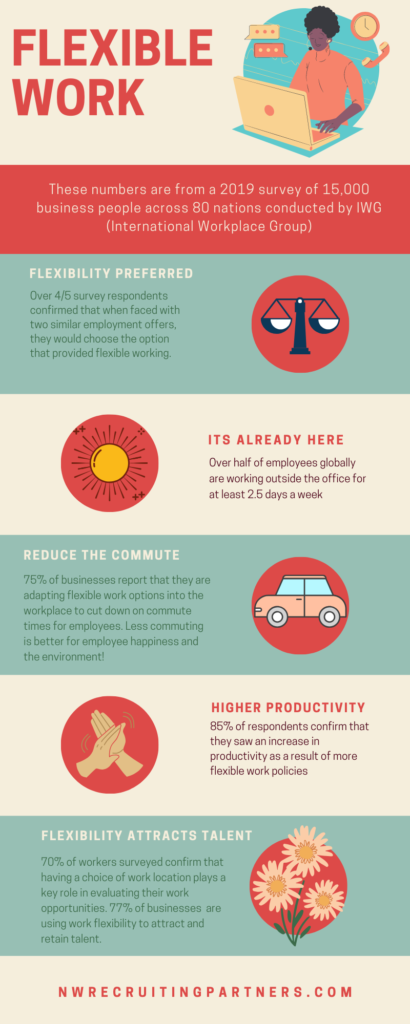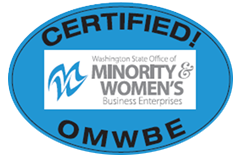
A few years ago, the thought of asking an employer whether I could work from home sounded about as scary as jumping out of a helicopter. Working 9-5 at a desk was a something we all had to grin and bear if we were not extremely talented graphic designers or freelance creatives. I had to work hard at sustaining my optimism in the belief that full time remote work with flexible hours, somewhere, waiting for me. Fast forward to right now, as Covid-19 is sweeping across the city of Seattle, companies are waking up to the health benefits of flexible, remote work. Working from my home office, with my cup of coffee and co-worker cat, I am here to tell you that a desire for flexible work is no longer pie in the sky, but effective and in demand. If your company hasn’t yet considered introducing flexible hours, it is time to catch up.
A 2019 study conducted among 15,000 business professionals across 80 nations, by the International Workspace Group (IWG), shows a shift in power. Employees (and future employees) are now dictating work-life demands in a way that has never happened before. Over 4 out of 5 respondents confirmed that if faced with two job offers, with similar pay and benefits, they would turn down the job that didn’t provide some form of flexible working. Over half of the employees surveyed are already working remotely for at least 2.5 days a week, and 85% of those surveyed confirm that productivity has increased because of their work flexibility.
Happiness and work-life balance are taking the front seat as candidates consider their future places of work. 70% of those surveyed by IWG say that having a choice of working remotely is key in their career decision-making process. In a recent study conducted by FlexJobs, 2,100 people out of 3,900 identified themselves as having a mental illness, with 84% of that group reporting that flexible work would help them better manage their mental health, with 95% of overall respondents reporting that a flexible job would make them a happier person in general.
So, what does work flexibility look like? The definition of what is flexible changes over time, and even from person to person. Before remote work became the new norm, it was “flex hours,” allowing employees to start and finish their workday outside of the box of 9-5. If you needed to rush your sick kid to the doctor or catch a school play, you could make it up later that week. “Job sharing” is a growing practice that allows two part-time workers to share one full-time job. Companies with unlimited, flexible vacation time, are seeing lines out the door for applicants, and creating a culture that rewards quality of work rather than hours worked.
What could be more awesome than healthy, happy, productive employees and attracting the best talent to your company? There is no “one size fits all” solution for flexible work, but the statistics show that if you want to expand your reach for talent, it’s time to incorporate these principles into your office structure. If the news is telling us anything, it’s that we can’t predict what will happen next, but you can be sure that the trend of work flexibility is here to stay.
Author: Alex Niedzialkowski- Junior Recruiter at Northwest Recruiting Partners and Seattle Financial Staffing
Sources:
https://www.flexjobs.com/blog/post/survey-flexible-work-mental-health/
http://assets.regus.com/pdfs/iwg-workplace-survey/iwg-workplace-survey-2019.pdf



